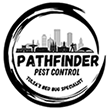Dealing with pests is an inevitable part of maintaining a home. From insects to rodents, these unwelcome guests can cause structural damage, spread diseases, and disrupt your peace of mind. Identifying the type of pest and understanding how to eliminate them is crucial for effective pest management. Here’s a guide to help you identify common household pests and tackle them.
1. Ants
Identification:
- Small, segmented insects with elbowed antennae.
- Common types include black ants, carpenter ants (larger, black or reddish-brown), and odorous house ants (give off a strong smell when crushed).
How to Eliminate Them:
- Locate and remove food sources by cleaning spills and storing food in sealed containers.
- Use bait traps or ant-specific insecticides to target colonies.
- Seal cracks and crevices around your home to block entry points.
2. Cockroaches
Identification:
- Flattened, oval-shaped insects with long antennae.
- Common species include German cockroaches (light brown with two dark stripes) and American cockroaches (larger, reddish-brown).
How to Eliminate Them:
- Keep your home clean and free of food debris.
- Use gel baits and boric acid to eliminate infestations.
- Fix leaky pipes and eliminate moisture sources, as cockroaches thrive in damp areas.
3. Rodents (Mice and Rats)
Identification:
- Mice: Small, gray or brown, with long tails and large ears.
- Rats: Larger, with a heavier body and shorter tails in proportion to their size.
- Signs include droppings, gnaw marks, and scratching noises.
How to Eliminate Them:
- Set traps in areas where rodents are active (e.g., along walls, near food sources).
- Seal entry points using steel wool or caulk to prevent re-entry.
- Remove clutter and store food in rodent-proof containers.
4. Termites
Identification:
- Small, pale insects that resemble ants but have straight antennae and equal-sized wings.
- Signs include hollow-sounding wood, discarded wings, and mud tubes near foundations.
How to Eliminate Them:
- Contact a professional pest control service for termite treatment.
- Use bait systems or liquid termiticides around your home’s perimeter.
- Reduce moisture levels and remove wood debris near your home.
5. Bed Bugs
Identification:
- Small, oval, reddish-brown insects about the size of an apple seed.
- Signs include red bite marks on your skin, rust-colored stains on bedding, and shed skins.
How to Eliminate Them:
- Wash and dry bedding and clothing on high heat.
- Use mattress encasements and vacuum crevices thoroughly.
- Apply insecticides labeled for bed bug control or hire a professional exterminator.
6. Spiders
Identification:
- Eight-legged arachnids with a variety of shapes and sizes.
- Common household spiders include house spiders (small and brown) and black widows (black with a red hourglass marking).
How to Eliminate Them:
- Remove webs and vacuum areas where spiders are active.
- Use insecticides or spider repellents as needed.
- Seal cracks and keep outdoor lights off at night to reduce spider attraction.
7. Flies
Identification:
- Small, winged insects with large eyes and rapid flight.
- Common types include house flies, fruit flies, and drain flies.
How to Eliminate Them:
- Keep trash bins covered and dispose of food waste promptly.
- Use fly traps, sticky tape, or insect sprays.
- Clean drains and eliminate standing water to remove breeding sites.
Prevention Tips for All Pests
- Regularly clean your home to eliminate food and water sources.
- Inspect and repair any structural vulnerabilities, such as cracks, gaps, and leaks.
- Use weather stripping and screens to keep pests out.
- Conduct routine pest inspections to catch early signs of infestations.
When to Call a Professional
If an infestation becomes too large or persistent, it’s best to contact a professional pest control service. Professionals have the expertise and tools to handle severe infestations and provide long-term prevention solutions.
By identifying and eliminating pests promptly, you can protect your home and maintain a safe, healthy living environment.
